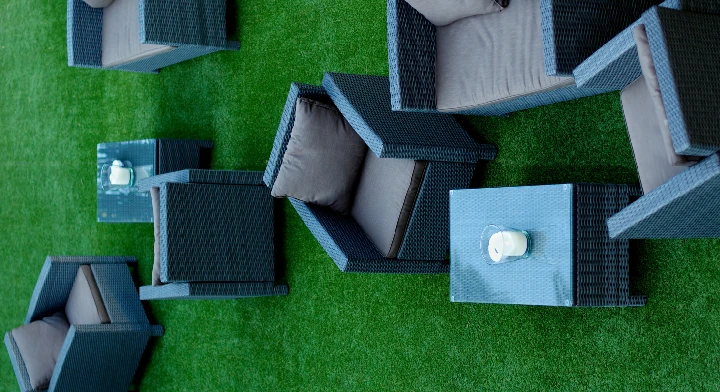
- Afrikaans
- Arabic
- Belarusian
- Bengali
- Czech
- Danish
- Dutch
- English
- Esperanto
- Estonian
- Finnish
- French
- German
- Greek
- Hindi
- Hungarian
- Icelandic
- Indonesian
- irish
- Italian
- Japanese
- kazakh
- Rwandese
- Korean
- Kyrgyz
- Lao
- Latin
- Latvian
- Malay
- Mongolian
- Myanmar
- Norwegian
- Persian
- Polish
- Portuguese
- Romanian
- Russian
- Serbian
- Spanish
- Swedish
- Tagalog
- Tajik
- Thai
- Turkish
- Turkmen
- Ukrainian
- Urdu
- Uighur
- Uzbek
- Vietnamese
false grass for dogs
Oct . 19, 2024 13:47 Back to list
False Grass for Dogs A Comprehensive Guide
In recent years, the concept of using false grass, or artificial turf, for dogs has gained significant popularity among pet owners. With the increasing concern for maintaining natural lawns while providing a clean and safe environment for our furry friends, artificial grass presents a compelling alternative. This article aims to explore the benefits, drawbacks, installation, and maintenance of false grass for dogs.
Benefits of False Grass
One of the most significant advantages of artificial grass is its durability. Unlike natural grass, which can be easily damaged by a dog's exuberant play, artificial turf can withstand heavy foot traffic and will not wear out or become patchy over time. This makes it an ideal solution for homes with multiple dogs or those that have high-energy breeds.
Moreover, artificial grass is low maintenance. Pet owners often find themselves spending countless hours mowing, watering, and fertilizing their lawns. False grass eliminates these tasks, allowing more time for bonding with our pets. Furthermore, it does not require any pesticides or herbicides, making it a safer choice for many pet owners who are concerned about the chemicals that could harm their dogs.
Another significant benefit is hygiene. False grass is designed with drainage holes that allow urine to pass through easily. This ensures that the surface remains clean and odor-free, making it a hygienic option for pet owners. Additionally, cleaning up after dogs is much simpler with artificial turf; a quick rinse with water or simple use of a pet-friendly cleaner is usually all that is required.
Drawbacks of False Grass
false grass for dogs

Despite its numerous advantages, there are some drawbacks to consider as well. One of the main concerns is heat retention. Artificial turf can become quite hot on sunny days, which may be uncomfortable for dogs, particularly breeds with thick fur. It’s essential to provide shaded areas or ensure that pets have access to cool spaces if you decide to install false grass.
Another consideration is the initial cost. The installation of high-quality artificial turf can be quite expensive compared to traditional sod. However, many argue that the long-term savings in maintenance and lawn care can offset this initial investment.
Installation
Installing false grass can be a DIY project, but many pet owners opt to hire professionals for a seamless finished product. The installation process typically involves clearing the area, laying down a base material, and then rolling out the turf. Ensuring proper drainage is crucial to avoid pooling water and prevent odors.
Maintenance
While artificial grass is low maintenance, it is not maintenance-free. Regular brushing is necessary to keep the fibers standing upright and maintain a natural appearance. Pet waste should be promptly cleaned, and occasional rinsing can help eliminate odors.
In conclusion, false grass for dogs offers a plethora of benefits while also requiring thoughtful consideration of its drawbacks. With the right installation and maintenance, artificial turf can provide a safe, durable, and hygienic play area for our canine companions. For pet owners seeking a low-maintenance solution for their outdoor spaces, artificial grass can be a fantastic alternative, allowing for more quality time spent with their pets rather than worrying about lawn upkeep. As technology advances and options become more varied, the future of pet-friendly landscapes is bright, bringing together the best of both worlds for our beloved dogs.
-
The Benefits of Artificial Turf for Indoors
NewsJul.15,2025
-
How Artificial Grass Suppliers Ensure Quality Products
NewsJul.15,2025
-
Artificial Grass and Pets: A Space for Relaxation
NewsJul.08,2025
-
Balcony & Outdoor Decoration with Artificial Grass
NewsJul.08,2025
-
Best Indoor Artificial Grass for Home
NewsJul.07,2025
-
Best Pet Turf for Dogs: Safe & Durable Artificial Grass Options
NewsJul.07,2025
Products categories









